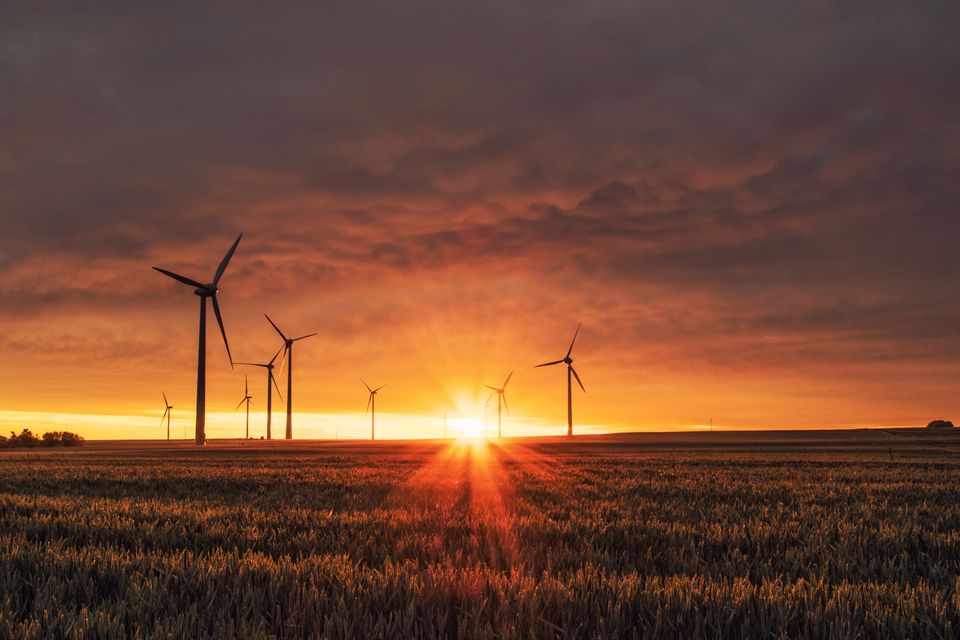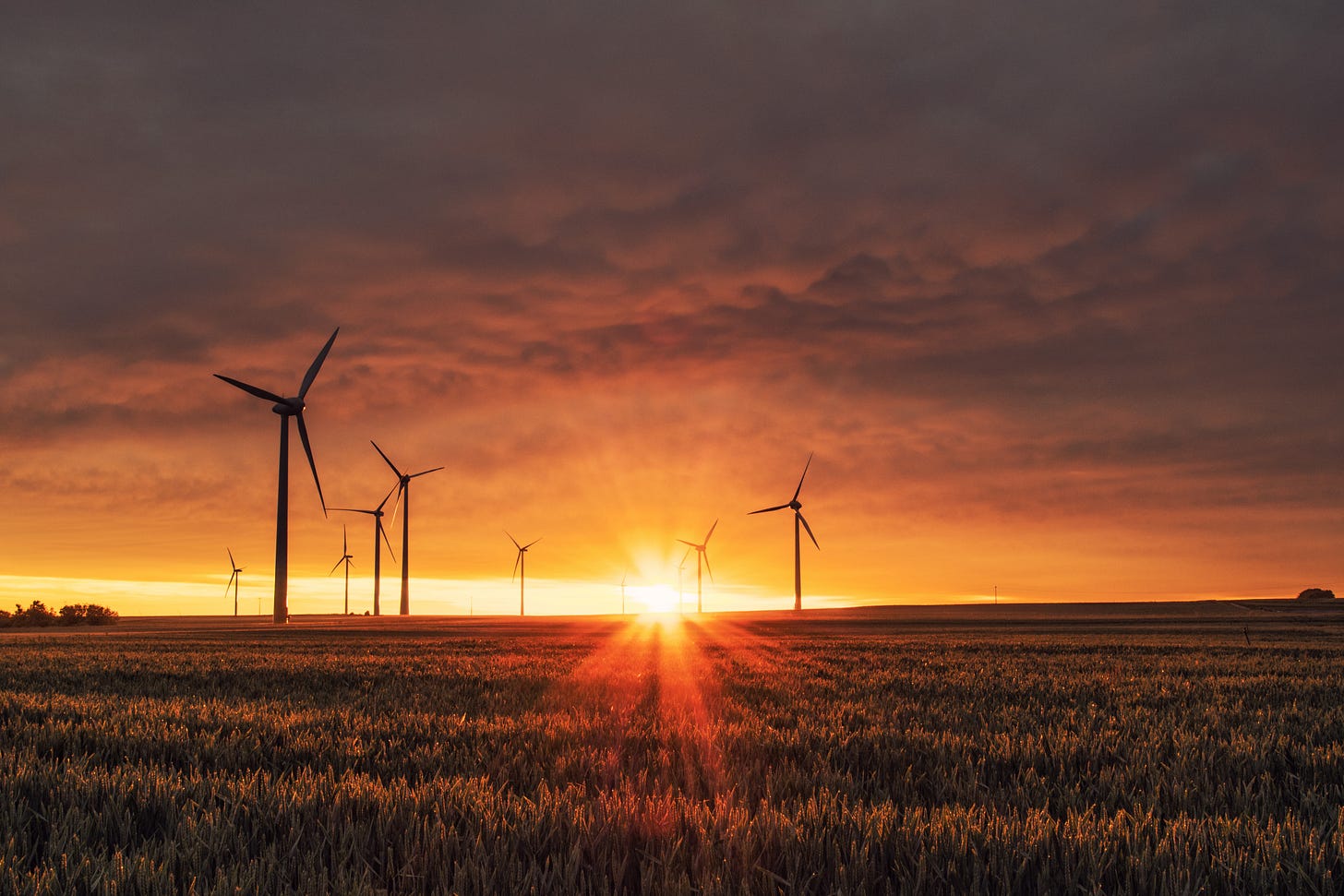Taking Action on Climate


Last week an online climate activist went viral with a doomsday tweet:
BREAKING: Joe Biden’s new NASA chief climate change adviser made clear that even with aggressive emissions reductions we should be prepared for global warming levels that will likely wipe out half of Earth’s species and threaten the lives of billions of people this century.
It turns out that @ClimateBen may have been stretching the truth a bit.
This discourse got me thinking, though. Gavin Schmidt, the adviser referenced above, has stated that we’re likely less than a decade away from seeing our first Paris Climate Accord-breaking year of heat. But while Schmidt states that “nothing particularly terrible happens at 1.5 degrees (of rise in Celsius),” that declaration obviously misses the mark. Even though ice will not disappear from the planet with that level of rise, we’ve already seen destruction on a scale virtually unheard of.
The article I’m about to link to references an old conception of heat as “baked in,” which we’ve recently discovered is not quite the case with climate change-related heating. But it is nevertheless correct when it states that climate change has already wrought some terrible damage on our planet. Joelle Gergis writes that the devastation of Australia’s “Black Summer,” the horrific 2019-2020 fire season which killed billions of animals and burned 72,000 square miles, will require generations of time to recover. That’s not the only disaster with a lasting footprint. We’re wrecking ecosystems, weakening others, and it’s very difficult to fix that, or to even stand back and let an ecosystem fix itself, in a timeframe that matters to humanity. The world is already on the brink of “particularly terrible.”
Murray Bookchin wrote that one of our goals in a liberated (anarchist) society is that it be ecologically diverse, and that diversity should be reflected in ourselves. A diverse ecosystem is a resilient one, capable of withstanding sickness, drought, or other disasters without the collapse of the system. But a homogenous ecosystem, which includes only a few integral species, is prone to complete collapse. If we stick to the Paris Accords, we will lose around 16 percent of all species by 2070. That’s a pretty big if. If we do not stick to the accords, the number is nearer to one third of all species.
There’s really no way to overvalue that loss—it is inestimable. It’s damn near a Thanos-snap. To pull that back to the human-centric, this means that our ecosystems will become extremely unstable. We’ll be close to the collapse of fishing industries across the globe; a market that provides a living for 1 out of every 10 people, and is the source of 20 percent of protein for a whopping 1 out of 3. Because insects that pollinate our crops will likewise be threatened by a collapse, even us vegetarians are in trouble.
So while the tweet above was an extrapolation of sentiment swinging into fallacy, it’s also not wrong. The numbers might be inflated, but the dangers described are truthful. We will lose a lot of species to climate change. We are going to threaten the lives of millions of people. Which makes Gavin Schmidt’s response to that tweet all the more disheartening. He takes issue with someone misrepresenting his words, but dismisses their concern by saying that a certain amount of warming is “within the control of human choices.” Like, yeah man, but what choices are you helping us make?
Part of the reason this tweet went viral is that, I think, it was one of the first (supposed) acknowledgments of the mess we’re in from a member of the government that reflects its true severity. The tweet was a vindication of the worry of scientists and activists while also calling out that our current efforts to curb climate change are going to fall dismally short. And yet Schmidt says nothing more than it’s “within the control.” It’s this blasé response that brings me to my main point.
We Need Direct Action on Climate Change
I never had confidence in our government to steer us away from apocalyptic climate change—you might have noticed my feelings on that before. With Biden’s administration solidly underway, my feelings haven’t changed. The bickering between climate-doomers and “reasonable” people distracts from the fact that we all seem to agree on: enough isn’t being done to prevent catastrophic climate change. The only reason I’m not a doomer, that I don’t think we all should pull a Jonathan Franzen and just watch birds while the world ends, is the people. I think we’re the only way out of this. And I think we can succeed.
To be clear, I don’t mean we’re meant to bear the sacrifices of a situation for which we’re not responsible. Your individual contribution to the CO2 budget is miniscule compared to the willful neglect of the world’s military forces and fossil fuel companies, and your sacrifices, even writ large across the populace, would not be sufficient to steer us away from disaster if they stayed in place. What I am suggesting is we start to show up in the streets for climate justice the way we did for racial justice last summer. These causes intersect—they practically braid, as people of color and other marginalized communities will bear the brunt of climate change disasters—and the only way a climate movement will succeed is if it calls on all peoples, those in harm’s way and those standing on solid ground.
What’s more, we need to be present in large numbers in this movement before the far-right begins to occupy it. I’ve brought up eco-fascism in this newsletter before, and I promise it’s going to get messy. The same way the Boogaloo Boys co-opt BLM messaging in order to stir up support, eco-fascists will suck the energy out of the climate resistance and swing it toward evil ends. It’s only a matter of time before you see some Green-Nazi militia at the border after a drought strikes Peru.
I would encourage you to begin looking for existing organizations in your area, with the caveat that a lot of these organizations will fall short of our goals and principles. Some of these organizations will be strictly peaceful and non-disruptive as stated polices, and others have problematic histories. You’ll start with these organizations because whether or not these people believe in precisely our ideals, we'll need them.
This means that we have to wade into an extant movement, more often than not, and do the work of changing minds. Andreas Malm's How to Blow Up a Pipeline (not quite what you think) is a good primer on the climate movement up to now, and why it’s so far been impressive but inadequate. You may be in luck and find that your area is rich with climate activists, or you might be like me and see a pretty dismal field. The thing to remember is that this will not be an overnight event. The threat we face is hard to pin down sometimes, and it may take time (and a nearby calamity) to cajole people toward action. But build on it when it comes. Get involved, stay involved, foster a community, and steer it left.
The Cache: A Practical and Relevant Prep
These past few weeks have been a little more theoretical than usual, and I don’t want to quit including practical, hands-on advice simply because we’ve covered the basics together (which we mostly have). While we take a journey toward the more leftist-than-prepper side of things (which is how we survive, so still on-topic) I’ll try to provide the occasional prep that is a little more specific and advanced than what we’ve already covered.
Preppers live on redundancy. When one thing fails, you have another ready. If that fails, you have a stopgap. It’s what keeps you going in an emergency. But what if something separates you from all your gear? You’re making a trip to the grocery, but you’re using a rental because your car is in the shop, and you didn’t switch out your emergency supplies. You forgot your EDC kit (for shame), and you’re far from home. There’s an emergency: a storm, a flood, a fascist uprising, it doesn’t really matter—you’re separated from your gear and you need to move before the situation gets worse. What do you do?
The solution for the advanced prepper is to have a cache, or multiple caches, of supplies scattered around the area where they live and on strategic, preplanned, bugout escape paths. The supplies secured within are nothing new:
- Water.
- A water procurement source, like a LifeStraw.
- Survival rations.
- A multitool.
- A first aid kit.
- A weapon—hardcore preppers will say guns and ammo, but I find it ridiculous to sequester $500 unless you don’t consider that a lot of money. I would settle for a knife.
- A compass and map.
Place these items in a sturdy container, like a food-grade bucket, ammo can, (have you been to an Army surplus store yet?) or even a tote bin.
Where to hide this cache is the next question. If you live in a rural area, this is easy: bury it away from your home, along either a road you commonly travel or your chosen bugout route. If you live in the city, a storage unit is ideal, but a locker at your workplace would do fine, as would a friend’s house that’s on the way out of town.
Up to a certain point, for me, prepping stops being about disaster mitigation and starts to become about prevention. Prevention is a hopeful idea; it sees a problem and says, “what if we didn’t?” What if we didn’t have to worry about catastrophic climate change? What if we stopped eco-fascism in its tracks? What if we started working today to keep tomorrow from being worse? That’s prepping, too.
